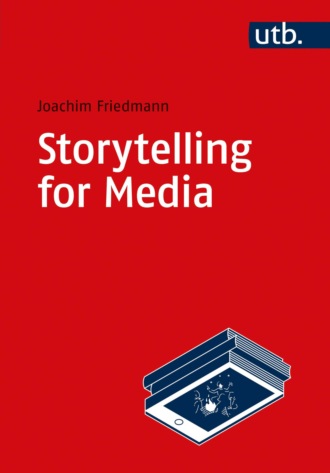
Полная версия
Storytelling for Media

Joachim Friedmann
Storytelling for Media
Introduction to the Theory and Practice of Narrative Design
UVK Verlag · München

Einbandmotiv: Henk Wyniger
Publiziert mit Unterstützung der Technischen Hochschule Köln und der ifs internationale filmschule köln.


Prof. Dr. Joachim Friedmann is a script- and headwriter for award-winning television series and author of storylines for comics for Disney, Egmont, and Carlsen. As a storytelling consultant, he has worked for institutions and companies like Microsoft and the German Federal Ministry of Environment or the German Soccer Federation DFB, creating educational and interactive online formats.
He teaches serial, transmedial, and interactive storytelling at the University of Hildesheim, the Film University Potsdam, the Film-Academy Baden-Württemberg, and the Hamburg Media School. In 2016, he received his doctorate with a thesis on transmedia storytelling. Since 2017 he is a professor at the International Film School Cologne (ifs), heading the Master’s program „Serial Storytelling“.
© UVK Verlag 2021
— ein Unternehmen der Narr Francke Attempto Verlag GmbH + Co. KG
Dischingerweg 5 • D-72070 Tübingen
Das Werk einschließlich aller seiner Teile ist urheberrechtlich geschützt. Jede Verwertung außerhalb der engen Grenzen des Urheberrechtsgesetztes ist ohne Zustimmung des Verlages unzulässig und strafbar. Das gilt insbesondere für Vervielfältigungen, Übersetzungen, Mikroverfilmungen und die Einspeicherung und Verarbeitung in elektronischen Systemen.
Internet: www.narr.de eMail: info@narr.de
Einbandgestaltung: Atelier Reichert, Stuttgart
Lektorat: Liz Daggett Matar und Jana Neef
Satz: pagina GmbH, Tübingen
utb-Nr. 5764
ISBN 978-3-8385-5764-9 (Print)
ISBN 978-3-8463-5764-4 (ePub)
1 Storytelling – More than Just Telling a Story
It would be tempting to start with a story at this point. Wouldn’t that be the right beginning for a book about storytelling? An exciting, interesting narrative that immediately captivates the reader and draws them into the subject? Yes, it might be exciting. But it might not be helpful. Because even though practically everyone tells stories and intuitively uses and recognizes the narrative form, they don’t give much thought to the way stories are created. This is exactly the question this book is meant to address. The methods used to tell stories are to be researched and presented here; it is, so to speak, a look behind the scenes of storytelling.
Narratives are ubiquitous; they simply belong to human life and appear as a natural way to communicate. Myths and fairy tales are important for the sense of identity in many early societies, and everyday stories thematize and structure interpersonal relationships. A multitude of stories are told in books, films, series, computer games, or documentaries in order to entertain, inform or convince. Stories are one of the most important forms of organizing communication and information across all social, historical, and cultural layers. “International, transhistorical, transcultural, narrative is there, like life” (95), states ROLAND BARTHES in The Semiotic Challenge This observation leads some people to the mistaken assumption that life itself writes the best stories. So why write a book on storytelling, when stories are omnipresent and happen all the time around us anyway?
The answer is simple: they don’t just happen. Stories are told. Life and existence only provide the material from which storytellers form their stories. The storyteller must select interesting material from the almost infinite number of events of daily life, shape them in a certain way to make them into a story, put them into perspective, structure them, and dramatize them. It is a craft, an art.
But although, or perhaps because, they are so ubiquitous, it doesn’t seem that easy to investigate stories, or to reveal their design principles. Stories are perceived as a natural phenomenon. When I ask the supposedly simple question in seminars or workshops: “What actually makes a story?” there is often thoughtful silence – although all participants have told a story before and have read, seen, heard, or even interactively experienced a multitude of stories. Nevertheless, this is not a contradictory finding. Even if children intuitively identify and name narrative texts, a narrative is at the same time a complex semiotic construct and narrative design strategies are by no means self-evident on closer inspection. Narrativizing texts, to describe the process of storytelling academically, is a highly complex, multi-layered, and differentiated procedure. At first glance, there would seem to be more logical, simpler, and concise ways of organizing, structuring, and sharing information. But stories appear to be the easiest way for the human brain to communicate and process information, as cognitive psychology research suggests.
Thus the narrative text deliberately leaves blank spaces and often – in contrast to instructive or scientific texts – does not reveal specific information, for example in crime novels or detective stories. Even when we encounter animals speaking in stories, such as in Aesop’s fables, or even household appliances, such as in Disney’s animated film The Brave Little Toaster, we can still find the narrative credible on an emotional and semantic level. And regardless of whether a narrative is conveyed orally, literarily, cinematically, or digitally, in the vast majority of cases it assumes a prototypical narrative structure.
The attempt to grasp the specifics of this transcultural and transhistorical form of communication theoretically begins in the ancient world, with ARISTOTLE’S seminal work, Poetics, in which Aristotle refers to the dominant narrative forms of his time: drama, epic, and poetry. This approach is further developed in Germany by GOTTHOLD EPHRAIM LESSING in a collection of essays published as Hamburgische Dramaturgie. At the end of the nineteenth century, narrative research had essentially emancipated itself from drama theory. In Russia, VLADIMIR PROPP presented the Morphology of the Folktale in 1928, the first systematic investigation of a narrative genre. However, a more fundamental scientific examination of narratives did not begin until the 1960s, when French structuralists took up and systematically developed the ideas of Propp and the Russian formalists.
Since TZVETAN TODOROV coined the technical term “narratology” (The 2 Principles of Narrative 44) for narrative studies in 1969, narrative forms of communication, subsumed in practice under the term “storytelling,” have received increasing attention. This has been particularly true in the last twenty years, in applied contexts such as journalism, marketing, organizational development or coaching, as well as in science. MARTIN KREISWIRTH thus coined the term “narrative turn” (377–382) in the humanities and notes that since the 1990s there has been an increased interest in questions of narrative form in a multitude of academic disciplines, such as art, cultural studies, and the social and natural sciences, as well as disciplines further afield such as medicine, economics, business administration, and law.
At the same time, it should be noted that the concept of storytelling is often used with little reflection, both in everyday life and in academic contexts. A story is something that is told, according to minimal consensus and circular reasoning. The minimal definitions of narrative science also fall short, especially in an applied context. In narratology, a narrative is described as a chain of events and actions in time and space. Especially for people who are interested in telling stories themselves, for storytellers, such descriptions do not go far enough. As the narratologist MARIE-LAURE RYAN shows, the design of a narrative text is subject to a multitude of conditions and specifications – even if storytelling techniques are often used intuitively. In both the scientific and the applied context, however, the aim must be to analyse and reflect on the principles of narrative design and thus make them consciously usable.
Due to the multitude of disciplines dealing with the overarching subject of storytelling, diverse and varied interests in knowledge, application, and teaching of storytelling are to be expected. For example, filmmakers may focus on questions of narrative structuring, since audiovisual formats such as feature films and horizontally-narrated drama series or sitcoms have different temporal lengths that affect the narrative structure. Documentaries and “reality TV” shows are shaped into stories at many points and in many ways; even in those that look the most “raw” or observational, dramatic turning points have been created. In game design, on the other hand, questions of spatial semantics are of importance, since in games spaces of experience are created for the recipients, which are explored both playfully and narratively. In marketing, however, it is of interest how certain messages can be communicated more powerfully by emotionalizing a story in order to trigger buying impulses or communicate political content more effectively. In medicine, one question may be how patients are brought into self-efficacy and self-responsibility through causal connections that are a focus in healing stories. The use of appropriate techniques is also context-dependent and – especially in academic teaching – the specific needs and desired outcomes of the respective discipline should be taken into account as much as possible.
That said, there are numerous aspects that could be of use to all of the aforementioned disciplines: a systematic overview of narrative design strategies in various narrative media, based on scientific, practical, and dramaturgical-artistic approaches. The purpose of this book is to create this overview and to make storytelling techniques available to those interested in both theory and practice. The central design principles of narratives – be it the creation of narrative figures and narrative spaces, the creation of turning points, or the structuring of narratives – are each the subject of a separate chapter, in which stories in various narrative media are examined from a scientific-theoretical as well as a practical and application-oriented perspective. The basic narrative strategies are transmedially applicable. Nevertheless, some of these strategies find media-specific forms. Thus, the creation of subtext or the emotionalization of a narrative in verbally-mediated and audiovisually-received texts differs in some points – even if it is an important component of narrativization in both media. In this context, special attention is paid to new forms of interactive and digital narration – the possibilities of intervention that recipients have, for example, in the design of the game’s narrative, change some of the parameters that apply to classical narrative media.
This book will not answer the question of why storytellers prefer to communicate in the form of stories, why they emotionalize information, surprise listeners and readers with twists, explore the personality of a character in a series with many episodes, to move viewers in a cinema to tears, or to engage players in a game for many hours. But storytellers do all of these things, and how they do them will be answered in detail throughout this book.
2 The Narrative Figure – Life, Theme, Function
One obvious constant in stories is the protagonist. In all narratives, of all cultures, we encounter beings with goals, desires, and emotions. Aristotle noted that “men in action” (11) are imitated in stories, and when it comes to imitating acting people, storytellers should, obviously, be inspired by reality and life. LINDA SEGER, a script consultant from Hollywood, also assumes this. For her, the best way to create a film character is through detailed research.
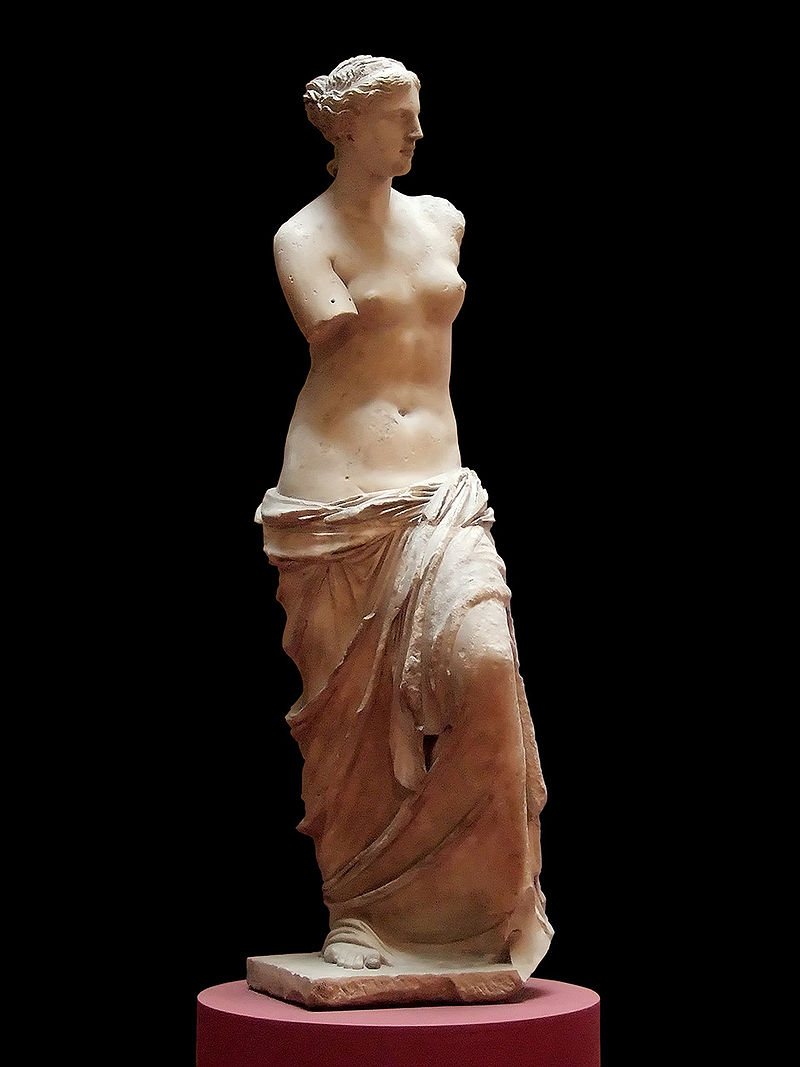
A sculpture of Venus of Milo. Image in public domain.
Psychology, profession, milieu of origin, and appearance are for her the constituent framework to create as credible and lifelike figures as possible. If one looks at series such as The Wire, the socially critical films by Ken Loach, or the novels of Jonathan Franzen, this finding also applies. But what about a character like Colonel Hathi, the disciplined elephant from Disney’s The Jungle Book, or HK-47, the merciless battle droid from the computer game Star Wars: Knights of the Old Republic? Here even the most intensive research would not have led anywhere, because in real life there are no elephants with military ranks or cynical war robots. Such figures are not credible in a naturalistic sense, but primarily transport a worldview and embody a theme. Author ROBERT MCKEE states:
“A character is no more a human being than the Venus of Milo is a real woman. A character is a work of art, a metaphor for human nature.” (375)
In this context, an elephant, a marionette like Pinocchio or – as in The Brave Little Toaster – an ensemble of household appliances can also become narrative figures. Whether they are life-like or not does not matter at first.
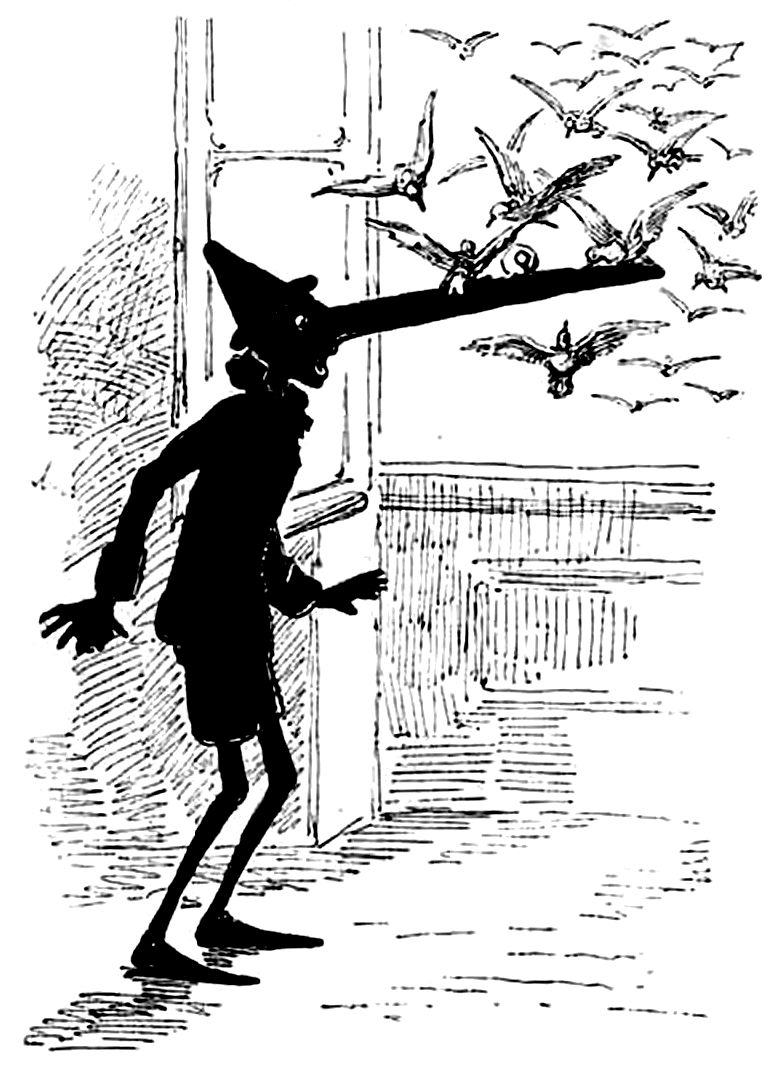
Pinocchio is a character based on an Italian children’s novel. Image in public domain.
In structuralist narrative research, on the other hand, neither the credibility nor the metaphorical or thematic location of a character are the focus of attention. Theorists such as Vladimir Propp or ALGIRDAS JULIEN GREIMAS emphasize the figure’s function in the narrative’s plot. Thus, Propp identifies seven figures who can complete all the actions and fulfull all the roles in a Russian fairy tale: the villain, the donor, the helper, the princess and her father, the dispatcher, the hero, and the false hero. In fact, Propp’s scheme can also be applied to other types of text: a character like Conan in Conan the Barbarian, for example, is neither credibly taken from life nor does he necessarily convey a theme or a world view. But Conan is always a hero, whether in the literary mode, the comic version, the film adaptations, or in the computer game Conan Exiles. Even in documentary, where the featured character ar not actors and dialogues are not prescripted often, in editing, attributes are exaggerated or certain details are withheld to craft the people into characters who serve the telling of the story. In the following chapters, we will take a look at the various different methods with which characters can be constructed.
2.1 Functional Figures
The Structuralist Approach
As early as 1923, when he systematically examines the Russian fairy tales and identifies the seven functions mentioned, Vladimir Propp comes to the conclusion that the figure has a clearly defined function in the plot. The semiotician Algirdas Julien Greimas further developed Propp’s model and reduced it to six functions, which he called “actants” (201):
subject
object
sender
receiver
helper
opponent
These terms result from the relationship to the object of desire. Thus an actant does not necessarily have to be a figure, it can also be an object. But the object of desire can also be a figurative one, for example when Harry Potter is looking for the prisoner of Azkaban or when the plumber Mario wants to free his girlfriend from Donkey Kong’s grasp. Several actants can also be merged into one figure, which Greimas then calls the “arche-actants” (211). Likewise, an actant can be realized in several individuals.
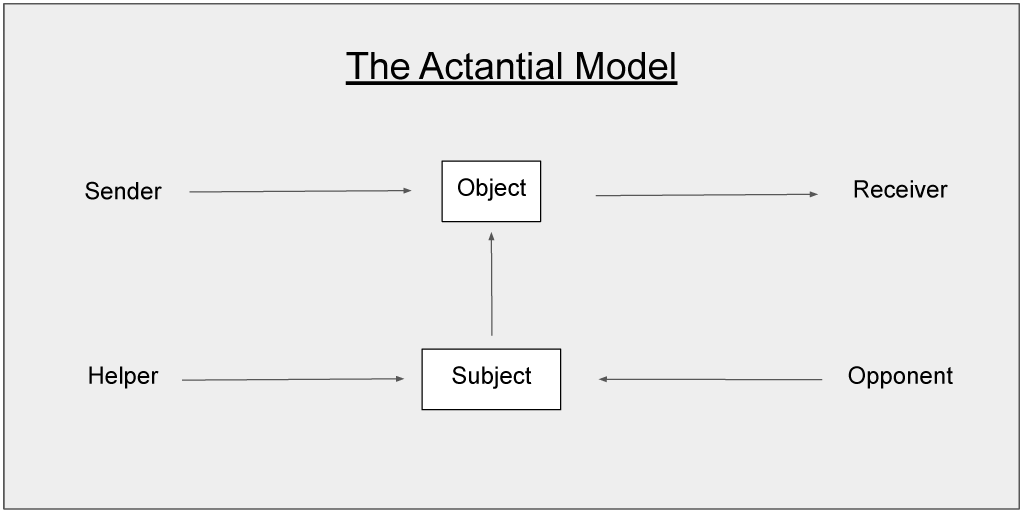
A visual representation of the actantial model, developed in 1966 by semiotician Algirdas Julien Greimas. Illustration by Jana Neef.
Due to its high degree of abstraction, the actantial model can be applied to the analysis of a large number of different narratives. In addition to Russian folktales, Greimas also examines the work of the novelist Georges Bernanos and transcripts of a child’s therapy session where the child is telling dreams and self-invented stories. The functions of the characters can also be portrayed in film narratives. In Indiana Jones and the Temple of Doom, Indiana Jones (subject) is supposed to retrieve the holy Sankara stone (object) for the suffering villagers (sender and receiver = arche-actants), which was stolen and to free the children of the village (object) who were kidnapped. With the help of Willie and Shorty (both helpers), Indiana Jones can defeat the vizier (opponent), save the children, and return the Sankara stone to the villagers.
Greimas’ approach is also important in coaching, as well as in economics and social sciences, for the analysis of narratives. Using the Greimas model, ANNE-MARIE SODERBERG examines a business takeover in Denmark and analyses the stories in which the workforce communicates their experiences with the merger in the form of narrative interviews (3–36). She can show that the six actants can be identified in each of these experiences.
The Cultural Anthropological Approach
Using a different methodological approach, script-writing instructor CHRISTOPHER VOGLER also comes up with a model that describes an ensemble of figures through its functions. Vogler builds primarily on the work of JOSEPH CAMPBELL, whose concept of the hero’s journey (see Chapter 9 Narrative Structure) has a considerable influence on the practice of storytelling. (In this text we will use the term “hero” regardless of the gender or whether the protagonist is human at all, similar to how the the single, gender-neutral word “actor” now can describe all those who act.) The anthropologist Campbell investigated a multitude of fairy tales, myths, religious narratives, and legends from all over the world. He identified recurring structural parameters whose sequence of action he describes as the transculturally and transhistorically effective monomyth: the shared single myth that exists throughout the world and throughout time. Also universally understood are the figures the hero of the monomyth encounters on his journey, who appear transculturally in a multitude of narratives. Campbell names them “archetypes of the collective unconscious” in relation to C.G. JUNG’S psychotherapeutic works. Vogler uses these theories for dramaturgy and also transfers them to film narratives, naming the following archetypal figures in a narrative:
hero
mentor
threshold guardian
shape-shifter
shadow
trickster
The hero is in most cases the main character of the story, like Luke Skywalker in Star Wars. The mentor is his advisor or teacher, embodied in this case by Obi-Wan Kenobi. The shadow is the opponent of the hero, here Darth Vader. The threshold guardian watches over a threshold or boundary that the hero must cross throughout the narrative – the Empire’s stormtroopers want to prevent Luke from leaving Tatooine. The herald is to be understood analogously to Greimas’ sender, he confronts the hero with his task, just as R2D2 delivers the cry for help from Princess Leia to Luke. The shape-shifter is characterized by the fact that he can change his function again and again from the perspective of the hero and thus provides a moment of uncertainty or surprising turn, just as Han Solo first appears as a cynical mercenary, only to reappear at the decisive moment as an important friend who saves Luke’s life in the showdown. The trickster is an anarchic, often humorous character who is able to question the assumptions and certainties of both the hero and the audience time and again, as does C-3PO, whose inappropriate, ceremonial behaviour creates comic situations even in moments of extreme danger.
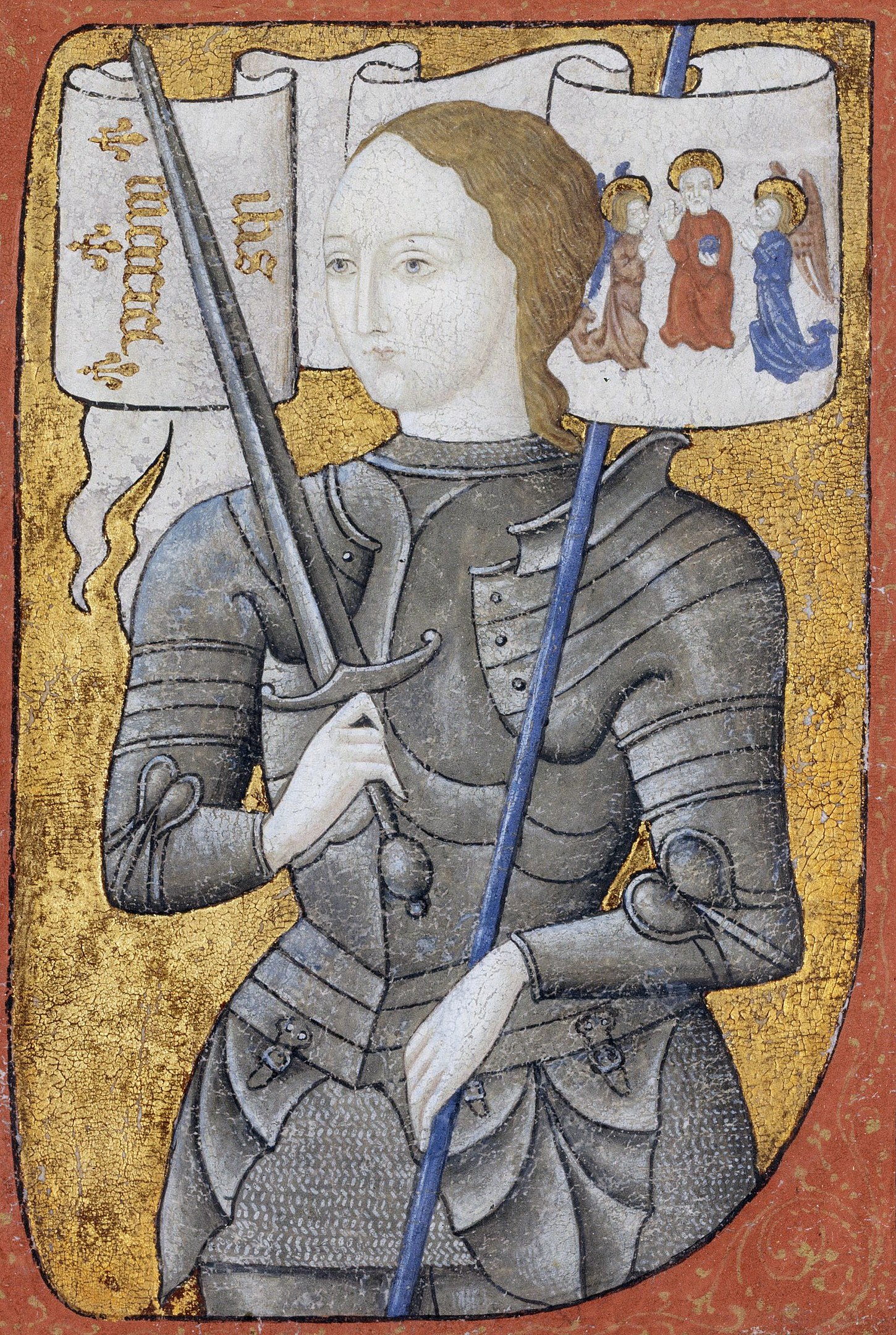
The peasant Joan of Arc (Jeanne D’Arc) led the French army to important victories in the Hundred Years’ War. The only direct portrait of Joan of Arc has not survived; this artist’s interpretation was painted between AD 1450 and 1500. Image in public domain.
It is not only in the labels that it becomes clear that Vogler defines his figures more narrowly than Greimas. At the same time, however, the ensemble’s function is broader than that of Propp or Greimas. For example, the shape-shifter has the ability to change roles several times. Sméagol from The Lord of the Rings, who in Vogler’s terminology would be a shape-shifter, transforms in Greimas’ terminology from a helper to an opponent, and finally again turns into the involuntary helper of the hero, Frodo.
Scientifically and theoretically, Vogler’s dramaturgical application of the archetype concept must be viewed critically. For Jung, who made his model applicable in psychotherapy, archetypes are not necessarily characters, but symbols and mythological allegories, which are important in the personality development of his patients. Nevertheless, Vogler’s model is useful in practice due to its unproblematic applicability to all kinds of narratives and the fact that it can be used in many areas such as marketing, film dramaturgy, or game design. In addition, it shows that the functions of certain figures can be repeatedly identified, transculturally and transhistorically. This applies not only to the archetypes described by Vogler. For example, the figure of the female warrior is present in a multitude of cultures, be it the Amazonian queen Penthesilea in ancient Greece, Mulan in Wei Dynasty China, Jeanne D’Arc in the Middle Ages in France, Snoop in the TV series The Wire, Katniss in The Hunger Games, or Lara Croft in Tomb Raider. Likewise, the figure of the just outlaw can be identified in almost every culture, as Robin Hood in the European narrative tradition, as the robbers in the 14th-century Chinese novel Outlaws of the Marsh, or in modernity as the myth of Che Guevara. One could argue that Jeanne D’Arc and Che Guevara are not narrative figures but are anchored in reality. However, this shows only the power of these narrative archetypes and that the factual can be narrated just as much as the fictional, as is seen in the numerous rewrites of Jeanne D’Arc’s myth in successful novels, plays, operas, and films.
Using such transculturally-effective character functions or – in Vogler’s terminology – archetypes, while at the same time creating them in a new and unusual way, is a challenge and an opportunity for every storyteller.
2.2 Mimetic Figures
Narratology emphasizes the function as a decisive component in figure design. But a purely function-oriented figure can appear one-dimensional and is in danger of leading to a formulaic narrative. Conan the Barbarian can be clearly classified in his function, but he lacks the psychological depth of a real human being. The success of Marvel’s superheroes with the audience is due, among other things, to the fact that the authors equipped their characters – in addition to their function as superheroes – with a comprehensible everyday life, which was hardly the case with their competitor DC in the early 1960s. The Marvel superheroes are not only on the road in the name of justice, they also struggle with everyday problems that are perceived as lifelike and relevant by the young target group. Peter Parker, (a.k.a. Spider-Man), has to work as a photographer and let himself be bullied by his imperious boss J. Jonah Jameson in order to finance his studies. He has problems with his girlfriend, Mary Jane, and he tries to help his Aunt May, who lives in small, cramped conditions.

